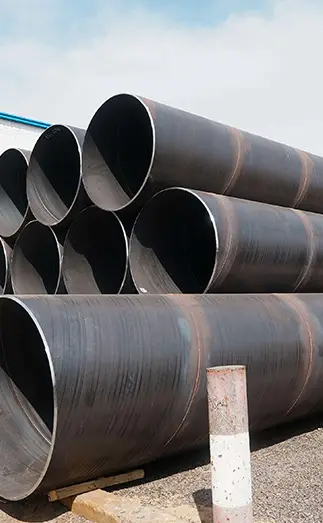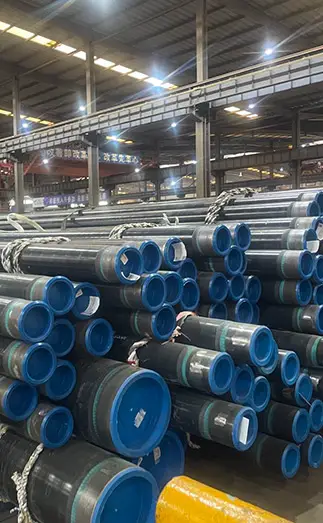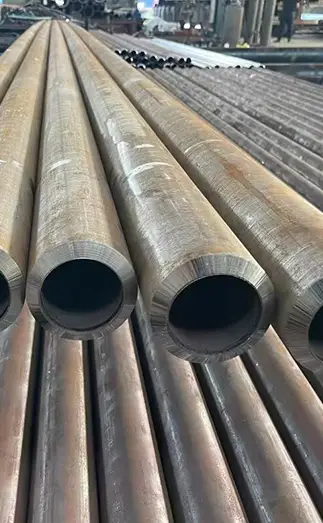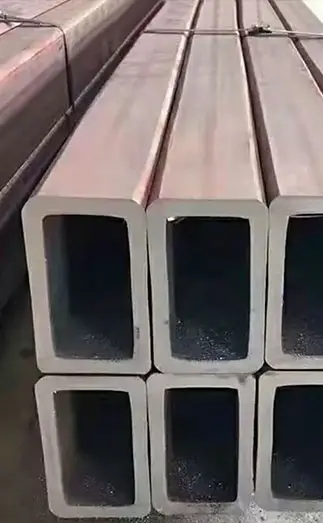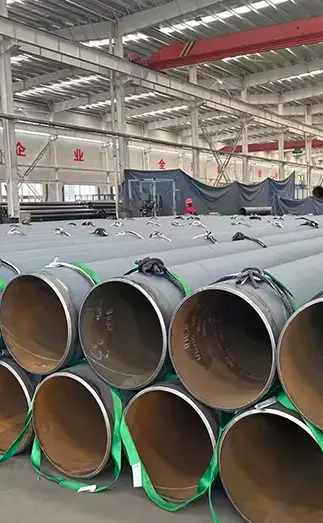Large-diameter square and rectangular steel pipes, also known as cold-formed hollow section steel, are structural steel tubes with square or rectangular cross-sections. They are produced by uncoiling, flattening, forming, and welding strip steel into round tubes, which are then reshaped into square or rectangular forms and cut to specific lengths.
With their hollow cross-section design, these pipes are widely used for pipeline transportation of crude oil, natural gas, water, and other fluid or solid materials.
Production Process of Square and Rectangular Hollow Section Pipes
There are two main manufacturing methods for square and rectangular hollow section (SHS/RHS) pipes:
Welded Forming Process
Seamless Forming Process
The main raw materials include Q235, Q345, and 20# steel:
Q235 — suitable for welded pipe production.
20# — used exclusively in seamless pipe manufacturing.
Q345 — compatible with both production methods.
The allowable wall thickness tolerance is ±10% of the nominal thickness for pipes ≤10 mm, and ±8% for pipes >10 mm, excluding corner and weld zones.
Advantages of Large-Diameter Square and Rectangular Steel Pipes
High Strength with Lightweight Design
Compared to solid materials like round steel, large-diameter square and rectangular pipes offer similar tensile and torsional strength with significantly lower weight. They are widely used for structural components such as oil drilling tools, drive shafts, bicycle frames, and steel structures in construction projects.
Enhanced Material Efficiency and Cost Savings
When used to produce ring-shaped parts—such as bearing rings and hydraulic jack sleeves—these pipes improve material utilization, simplify production processes, and reduce both manufacturing costs and time.
Disadvantages and Application Limitations of Square and Rectangular Pipes
Although square and rectangular steel pipes are indispensable in mechanical and strategic industries, round pipes remain the preferred choice for fluid transport due to their larger flow area and more uniform pressure distribution.
However, rectangular and square hollow sections provide superior bending resistance in planar stress conditions. This makes them ideal for agricultural machinery frames, construction frameworks, furniture, and industrial equipment where structural rigidity is crucial.
Conclusion
Large-diameter square and rectangular steel pipes combine strength, versatility, and efficiency, making them an essential material across construction, machinery, and transportation industries. Whether produced by welding or seamless forming, their balance of mechanical performance and material economy ensures lasting value and reliability in modern engineering applications.
For more: Rectangular tube application areas and advantages and disadvantages



 English
English Español
Español Français
Français بالعربية
بالعربية